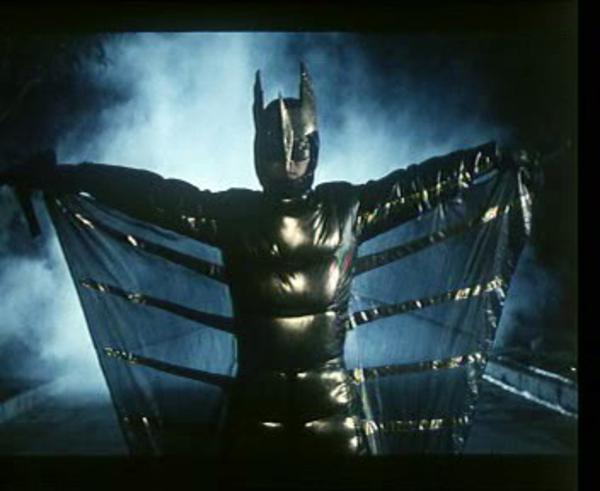Shadow of the Thin Man

1941![]()
Story by Harry Kurnitz
Screenplay by Harry Kurnitz and Irving Brecher
Directed by W. S. Van Dyke

Shadow of the Thin Man is the last of the classic four Thin Man films before the large drop in quality of the final two flicks. Dashiell Hammett doesn’t help provide the story, and Frances Goodrich and Albert Hackett have also moved on, leaving the writing in the hands of Harry Kurnitz and Irving Brecher (Kurnitz also developing the story) Director W. S. Van Dyke returns for his last Thin Man entry.
Shadow of the Thin Man was released November 21, 1941, on the eve of the US’s entrance into World War II with the bombing of Pearl Harbor. None of the ongoing worldwide conflict is reflected in the film, which involves murder and horse gambling conspiracies. The only real acknowledgement of real world events seems to be the rolling back of displays of Nora’s wealth, though it is still obvious they are flushed with money.
The Thin Man flicks zigzag back and forth between New York and San Francisco, so we return to the Bay Area for good time Bay Area fun. Also returning is Lieutenant Abrams (Sam Levene) from After the Thin Man, because we’re back on his beat. Once again he needs Nick Charles’ help, because of mystery murders with lots of complications.

Murder victim “Whitey” Barrow (Alan Baxter) is one of those obvious murder victims. Baxter’s also ridiculously overacting when he’s playing the tough mobster guy, yet sounds like a normal person when he’s hiding his gangster persona. It’s a weird choice (and frankly a bit distracting), luckily he gets knocked off early enough it doesn’t become a big problem.
Nora keeps up with Nick’s investigations the most in this sequel, following him on his searches, showing him up when it comes to dealing with his son, and even luring him home with the siren song of a shaking martini mixer. There are bonus points added for Nora heroically leaping onto a gun during the climactic scene where the real murderer reveals themselves by grabbing the gun they always have.
Aside from Nora Charles, most of the female roles are pretty thankless, despite being filled with quality actresses. Stella Adler manages to turn the limited role of Claire Porter into something amazing. Porter is drenched in the casings of the upper class, appearing to be well-to-do despite her gangster boyfriend. But her money comes from a job not so well-to-do, a job they can only hint at (due to the Hays Code) by her switching up accents when flustered by Nick Charles. Donna Reed has the truly thankless role as the secretary girlfriend to the accused murderer Paul. Despite a hint that she might be more than she looks due to who she works for, her character is given little to do except worry about her man.
Louise Beavers’ character of Stella, the Charles’ maid, is the largest part for a black actor in the Thin Man series. Sadly it’s what I call a Mammy Whammy, in that it’s over the top servant character. Beavers is associated with that type of role, partially because those roles were the only roles available to black performers. She gained fame with a non-stereotypical black maid role, Delilah in 1934’s Imitation of Life.

This is the Thin Man entry with some of the funniest bits in the series – the wrestling scene, the merry-go-round, the brawl at the restaurant, Nick getting a speeding ticket, and Nick’s encounter with an old landlady obsessed with radio crime shows and police gazettes, who talks Nick’s lingo and then some.
One of the major criticisms is the film focuses on too much that isn’t the murder mystery, and the sequence of events that the mystery follows are practically spelled out. It is true that things seem almost designed to happen no matter what Nick and Nora do, they are practically swept up into the original murder and are present at every important event following it, complete with the police actively encouraging them. The killer is the most obvious of the whole series, but my view on the films are that it is about the journey, not the destination. After being raised on two decades of carbon-copy police procedurals where the real differences are the show’s characters and gimmicks, which quickly become the defining reason to watch. The old detective movies that are memorable have their own cool characters and gimmicks, of which the Thin Man flicks excels. I don’t think Shadow of the Thin Man is a shadow of the prior films (BOOOOO!!! to that pun!), instead standing tall with the original four despite a few flaws.


|

The opening scene in the park with Nick and Nick Jr. helps establish that despite being a father of a growing boy, Nick still enjoys his carefree life of fun and adult games. The story he reads to his son is a racing form, not so expertly converted into a fairy tale. From Nick Jr.’s reactions, this is rather commonplace. Nora spies on her husband from afar, both admiring of her husband and his fatherly duties, and knowing Nick is probably up to no good. Stella has her scenes here, where she seems new to the Charles household so Nora can explain what is happening.
Fans of Bay Area history will enjoy the trip to the racetrack, as Nick and Nora cross the Bay Bridge over to Berkeley to the horse races. I’ve made this exact journey myself, though not exactly as we were going to watch wiener dogs race at Golden Gate Fields, the horses were just the side show! Also not exactly as this was back when you could drive both directions on either deck of the bridge! Hence Nick gets pulled over for speeding on the upper span, and even parks on the side of the bridge to get his ticket! Doing this today would result in a traffic jam of such epic proportions there would be delays weeks later! Despite Nick’s charm, he still gets the ticket, and he gets an escort to the racing track. An escort that steadily grows to include a huge number of emergency vehicles. It seems there was a murder at the racetrack!
Gomez the jockey is dead, a bullet to the face in the shower. Gomez was in trouble due to implications he threw his last race, and there doesn’t seem to be a gun or even any clues nearby. Nick is roped in because everyone assumes he’s already there to work on the case, but even as he tries to get out of it, Lieutenant Abrams is practically begging him for help.
Nora gets a little back at Nick for his horse-racing escapade by encouraging Nick Jr.’s attempts to get Nick to drink milk instead of his usual cocktails. The neat little scene shows some more insight into how the family functions even with the change in dynamics from two adults to two adults with a child that talks. It’s also a bit of studio-imposed family wholesomeness to try to downplay the rampant drinking of the earlier films.

Nora is also of the opinion Nick should do the case, as they rarely get to go to anywhere exciting anymore. Thanks to some remarks, they do end up going out…to a wrestling match! This was back when (some) people actually dressed up to go see wrestling matches. Though in a few of the local matches I’ve gone to did have people dressed up, most notably a guy who was always in full NASCAR fan gear and obnoxiously loud to the performers. Nora comes complete with a gigantic hat, which becomes a hilarious running gag. The wrestling scenes are among my favorite parts of Shadow, as Nick keeps running into some of his old “friends” that he busted, including an outgoing vendor named Mr. Meatballs and another guy named Spider Webb. As the wrestlers are going at it (one wrestler is Tor Johnson!), Nora gets very into the match, grabbing a hold of Nick and delivering a golden moment.
Because we still have a plot to do, the arena is run by the same mobsters who run the horse-racing racket, and Whitey the Newspaper Guy who fixes storied about gangster Stephens is trying to shake down more money from Stephens’ girl, Claire Porter, who he’s seeing as well as scamming. There’s also a good reporter character named Paul who is trying to take down Stephens, and is secretly dating Stephens’s secretary Mary as an accomplice for his task. Whitey is making so much noise and so many enemies that it’s no surprise he ends up dead and Paul framed for the murder.
When good people get framed is usually when Nick finally steps in, and he does. The first thing he does do is explain how Gomez the jockey was a suicide, and the gun is found down the drain of the shower. The scene where he discovers this is by breaking and entering with Asta, and features Asta being frightened by a tiny kitten and Nick being frighted by Nora, who has also sneaked in behind him to keep tabs on him. Despite telling Lt. Abrams what they know, the decide to not reveal Gomez was a suicide to keep the real murderer of Whitey on their toes.
One unexpected discovery from this film was that some children from 1941 were horrifying! As Nick Jr. rides a merry-go-round, several kids taunt Nick for not riding the ride as well, including one child made up to be as obnoxious as possible that calls Nick a “fraidy cat!” As Nick Jr. is obviously upset to see his dad mocked by mere kids, Nick takes a ride on a dragon seat (despite his obvious nausea that may or may not be related to how much he’s been drinking!) Asta is also on the merry-go-round, and is having trouble standing up straight. But when else are you going to see William Powell riding a dragon? Not at least until 100 years from now when we can have realistic CGI recreations of actors that are used for ridiculous fantasy films.
In the course of Nick’s investigations he comes across an awesome old landlady, who walks around with a portable radio that’s set to the latest crime stories, featuring a mystery super hero murder show! And that’s not enough, so she’s also packing a murder mystery magazine. So she’s more than eager to help Nick on his investigation, even disturbingly enthusiastic to let him in to Claire Porter’s apartment. There is a necklace that is of interest thanks to all the shaking down that was going on.
There is an awesome sequence at an Italian restaurant, which not only namedrops sea bass back before it was cool (the waiter practically demands they order the sea bass!), but the entire restaurant devolves into a huge brawl thanks to Asta causing trouble.
After another character appears to have suicided (or did he?!?!), and a burnt remains of the ledger that contained all the financial information about the gambling racket is discovered, it’s time for the familiar gathering of everyone together so Nick can explain everything and the murderer can make a mistake. It’s always who you least most expect, unless it isn’t!
Reviews:
**The Thin Man
**After the Thin Man
**Another Thin Man
**Shadow of the Thin Man
**The Thin Man Goes Home
**Song of the Thin Man
Thoughts on the Thin Man Amazon.com link
More about Thoughts on the Thin Man

Rated 8/10 (MGM, Louise Beavers, Spider, code, a dangerous beast, a well behaved child, the OG Red Lobster, befuddled)
Please give feedback below!






























